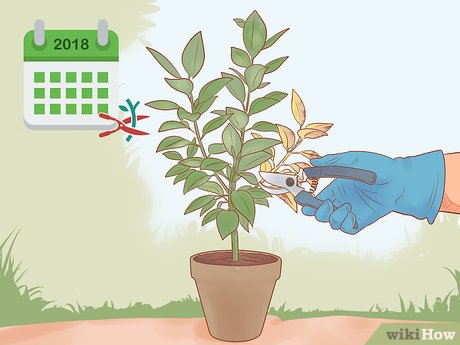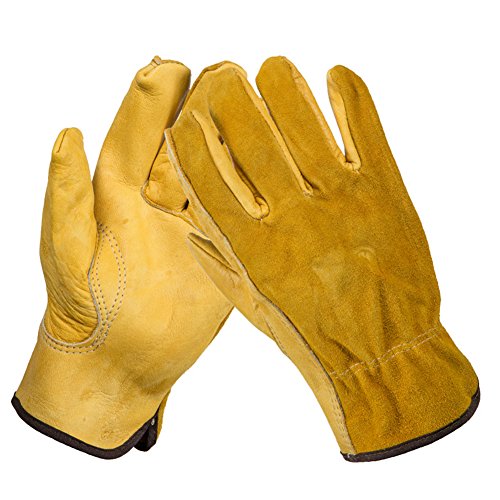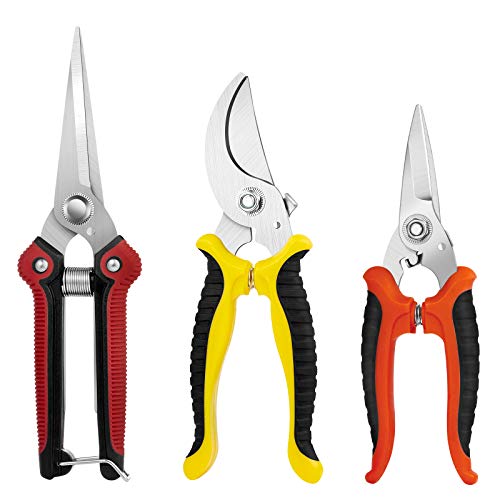Prune Ficus Robusta: [Importance, Season, Tools, Considerations and Steps]

 Ficus are plants that are used very frequently in interior decoration and the robusta is ideal to fulfill that function.
Ficus are plants that are used very frequently in interior decoration and the robusta is ideal to fulfill that function.
Although in its adulthood it can become a tree up to 40 meters tall, it is used in its ornamental phase for its large and shiny leaves.
It is recognized as a purifying plant for the environment, but care must also be taken not to consume it because it is toxic.
Pruning it is always a topic that causes many questions and to answer them there are now these lines that will be useful to you. Will you join us?
Why prune the Ficus robusta?
The ficus robusta requires very little care throughout its life and that is why it is one of the favorites to decorate inside the house. As it is adaptable, it is able to stay healthy even if it is not in its natural conditions.
However, pruning must be assumed as something mandatory to avoid complications and that it becomes larger than expected.

It is a fact that indoors it will not reach the dimensions of a tree but it is capable of giving unpleasant surprises. That is why pruning is oriented as a fundamental care.
When is it better to carry out the pruning of the Ficus robusta?
All types of ficus appreciate pruning at the end of winter, so they will be able to recover more easily. This is because they will lose little sap because they are still resting but they will soon restart the process so they will recover quickly.
The same if the ficus is indoors or outdoors but in an area with a very mild winter climate, it can be pruned at any time.
What tools should we use when pruning the Ficus robusta?
Gloves are one of the essential elements to carry out pruning because the ficus robusta can cause damage. This arises due to the latex that circulates through its structure and that comes out when cutting the branches, which can trigger skin irritations.

For the cuts, you will have to have hand scissors or gardening shears depending on the type of structure that the stems have.This is because as the plant ages, the stems tend to harden, requiring a stronger tool to cut them.

And, to help her in the healing process, it is also worth having a healing paste. A secret for the pruning process to be effective is that the cuts are very clean, which is achieved with sharp and disinfected tools.

What considerations should we take into account when pruning the Ficus robusta?
The considerations are aimed at evaluating the conditions of the plant to define the route to follow at the time of pruning.Using this route will make it much easier to get the job done and prevent the plant from being affected around cutting damage.

It is necessary to specify the final shape you want for the ficus because a large part of the pruning will depend on that.
How to prune the Ficus robusta without damaging the tree?
Pruning this species can be a simple task if you already have some idea of how to proceed. If not, we leave you clear instructions on what you should do:
- Check if there are bad, wilted, damaged or diseased parts and remove them first. This will make it easier for you to study the other parts of the plant and help it look cleaner. In fact, it is advisable that this step be fulfilled at any time when you notice any of them.
- Remove branches that tend to sprout near the base of the plant. Most commonly, these are weak, leafless branches, serving no valuable function within the structure.
- According to the arrangement that you have previously planned for the plant, cut the branches that are in an unfavorable position to comply with this format. The branches should not be pruned for no reason, they must have a purpose so as not to damage the plant excessively.
- Reduce the size of the remaining branches so that they are all of similar dimensions. This way you will achieve balance and it will be much better visually.

It is important that the cuts of all the main branches are obliquely oriented so that fluid does not accumulate and healing is delayed. In addition, it is common to prune the ficus roots when a transplant is going to be carried out, since it is capable of producing a large quantity.
Sometimes there are thin roots that go up to the substrate and that you can also remove to maintain a cleaner shape. In the end, one of the objectives of pruning is that you enjoy a cared for and healthy plant and pruning contributes a lot to that.

![Photo of How to Sow the Money Plant: [Method, Care and Complete Guide]](https://www.complete-gardening.com/wp-content/uploads/2021/06/cómo-sembrar-la-planta-del-dinero-390x220.jpg)

![Photo of Lilo Cuttings in Water: [Associations, Best Time and Sowing]](https://www.complete-gardening.com/wp-content/uploads/2022/08/lilo-cuttings-in-water-associations-best-time-and-sowing-390x220.png)
![Photo of Planting a Pear Tree: [Care, Irrigation, Soil, Pests and Diseases]](https://www.complete-gardening.com/wp-content/uploads/2022/08/planting-a-pear-tree-care-irrigation-soil-pests-and-diseases-390x220.jpg)